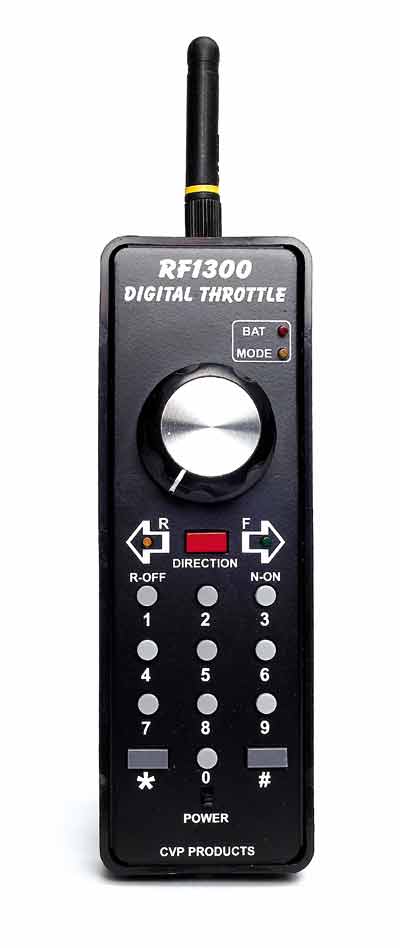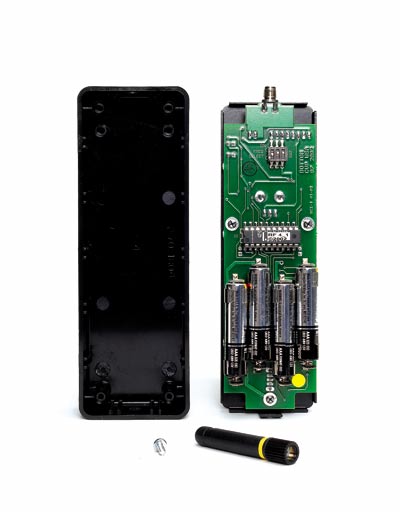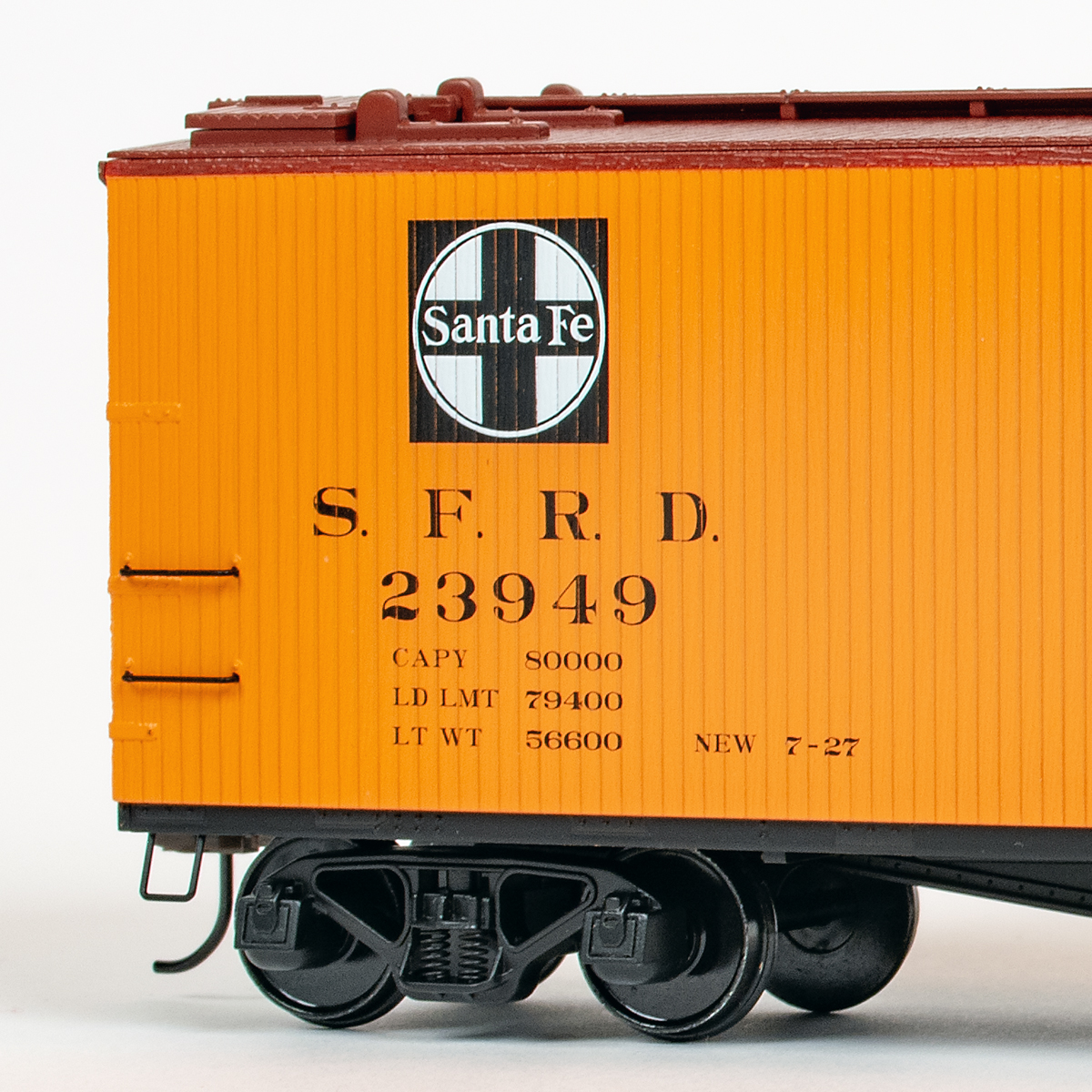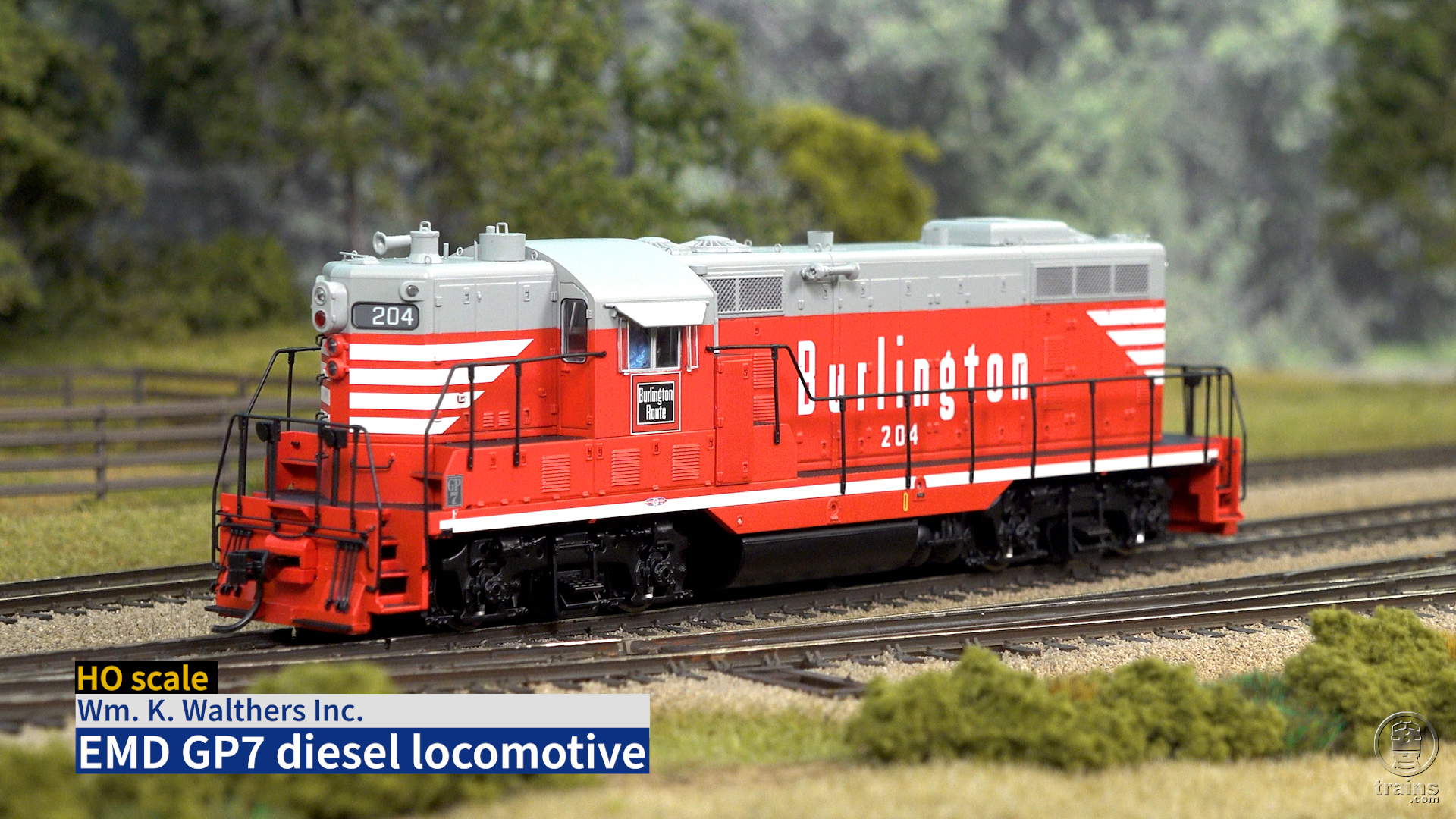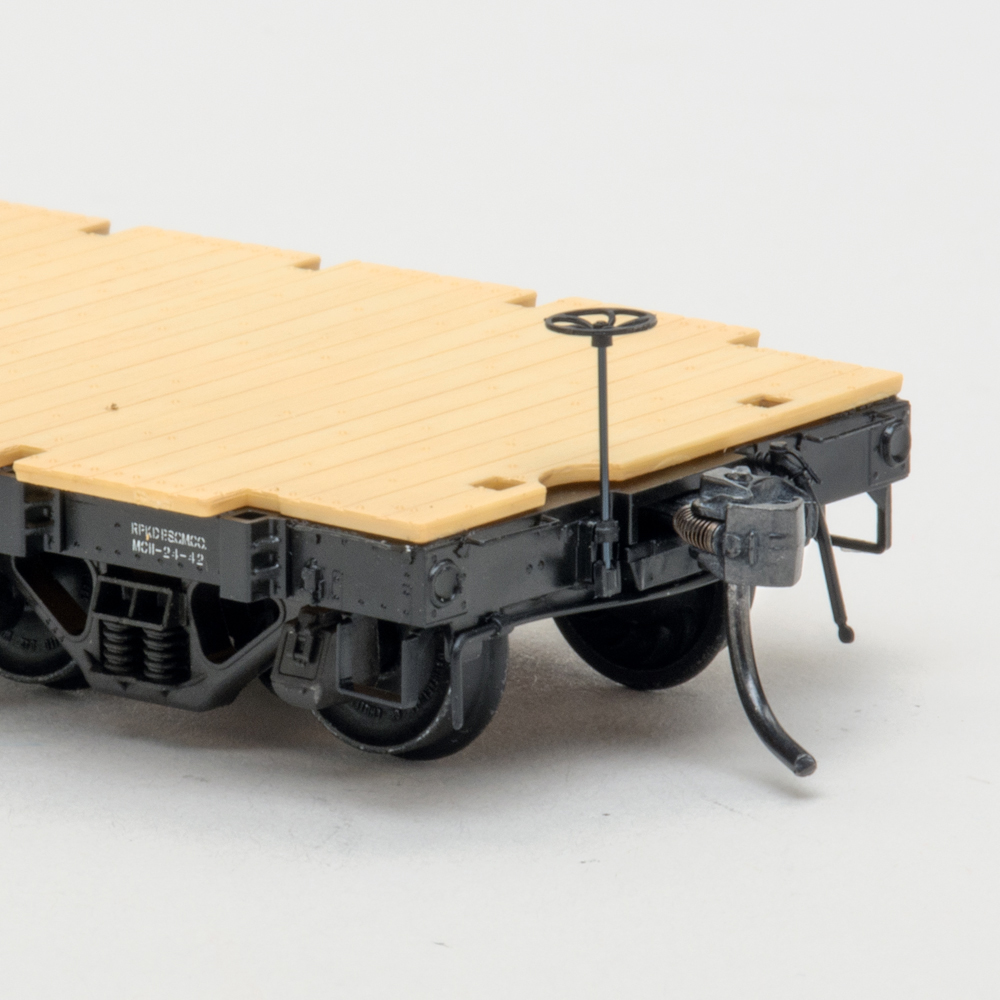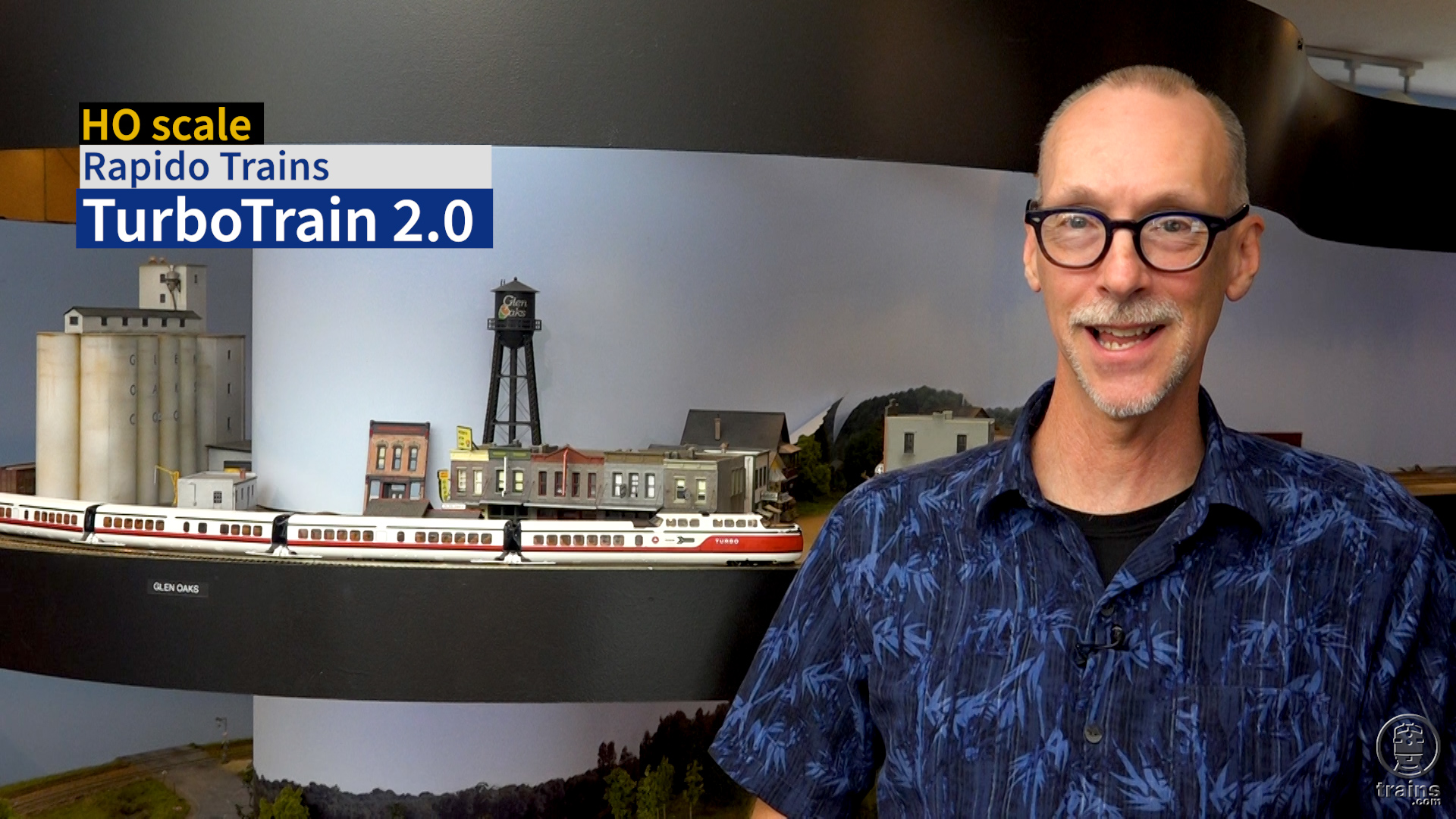The RF1300 is an operations-only cab, meaning that any locomotive programming or making or breaking of engine consists needs to be performed elsewhere, such as on the EasyDCC command station. The cab measures 6″ x 2″ x 1″ and weighs 6 ounces when loaded with four AAA batteries. All the electronics are mounted on the back of a metal faceplate that is then attached to the tough plastic box with a set screw and the 2″ screw-mounted antenna. The cab has a solid yet comfortable feel, and the speed control knob and direction button are placed to facilitate one-handed operation without having to keep looking down at the controls.
Perhaps the biggest improvement in CVP’s new-generation wireless cab is the elimination of the two ten-digit number dials – a feature that made the older TX900 series throttle somewhat cumbersome to use when assigning the cab to a locomotive or accessory decoder. To select a locomotive with this RF1300 wireless cab, simply press the number key, enter the locomotive road or consist number, and press the number key again. With that you are ready to run your train.
Also new for the RF1300 is single-key access to the headlight (function 0) and nine auxiliary functions using the ten-digit keypad – a great improvement for those using sound decoders. (In comparison, CVP’s older-style TX900 cab had only four auxiliary functions and headlight control.) Once a locomotive or consist address has been selected on the RF1300 cab, functions are turned on or off by pressing the corresponding number.
Another nice feature of the RF1300 is that you can activate accessory decoders while still being able to control locomotive speed and direction. When the operator enters the accessory decoder mode, a yellow indicator light informs him that he’s in that mode until he turns it off.
I put the new RF1300 Digital Throttle through its paces on the Milwaukee, Racine & Troy, Kalmbach employees’ club layout. Placement of the base station can be key to proper operation and quick response time of a wireless cab system, and CVP recommends the base station be located near the ceiling of the layout room. On the MR&T, however, we placed the base station under the layout near the floor. This location seemed to have little effect on the RF1300’s performance. (I’d still recommend mounting the base station above the layout if at all possible as line of sight works best.)
Response from the cab to the train was very good, and I did not perceive any lag or hesitation in execution of commands, even when using additional wireless cabs at the same time. The unit’s signal did not show any notable interference when blocked by bodies and functioned just as well whether I was facing the base station, turned away from it, or moving around the layout. With the help of Model Railroader assistant editor Cody Grivno, I then attempted to push the limits of the signal. While Cody monitored the locomotive’s actions on the layout, I walked down the hall to our workshop, two rooms away, and still maintained accurate train control! (Though only Cody could still see it.)
CVP Products RF1300 brings some nice improvements to the firm’s wireless cab control. The fact that CVP’s second-generation cabs can be used with existing wireless systems after exchanging base station chips is sure to make them a hit with many DCC users.
Price: RF1300-2 two-digit address range cab, $159; RF1300-4 four-digit
address range cab (also used with CVP base stations configured to work with Atlas, Lenz, NCE, and System One DCC systems), $159; RX900-E two-digit address base station, $99; RX904-E four-digit address base station, $99; RX900AL base station for use with Atlas and Lenz systems, $99.00; RX900NS base station for use with NCE and System One, $99
Manufacturer:
CVP Products
P.O. Box 835772
Richardson, TX 75083-5772
972-238-9966
www.cvpusa.com
Description:
Ready to use battery-operated Digital Command Control wireless cab
Features:
Built-in battery monitor that flashes when batteries need replacing
11/4″ rotary knob speed control and easy one-hand operation
Nine auxiliary functions plus head-light function 0
On/off power switch
Plug-in software chips for easy future upgrades
Push-button locomotive and accessory decoder address selection





